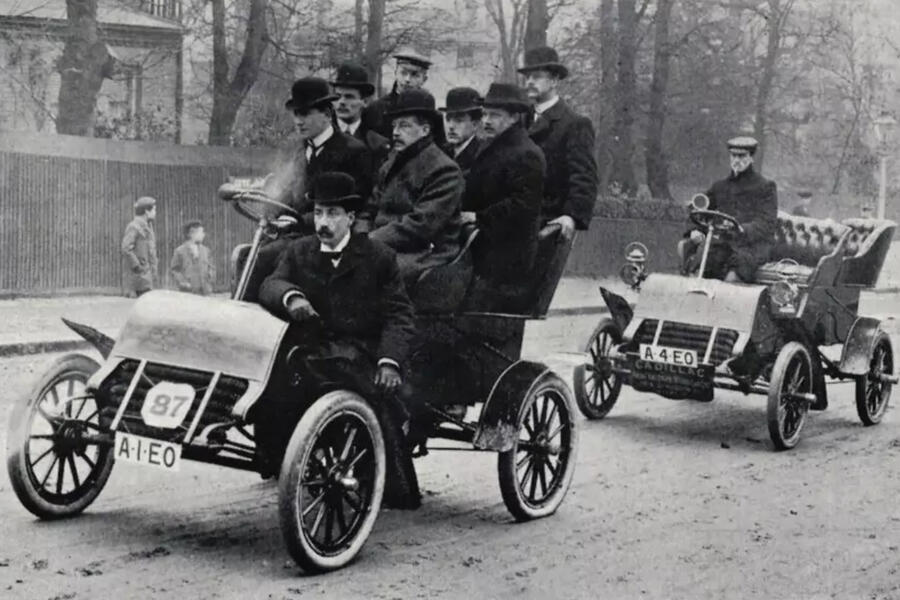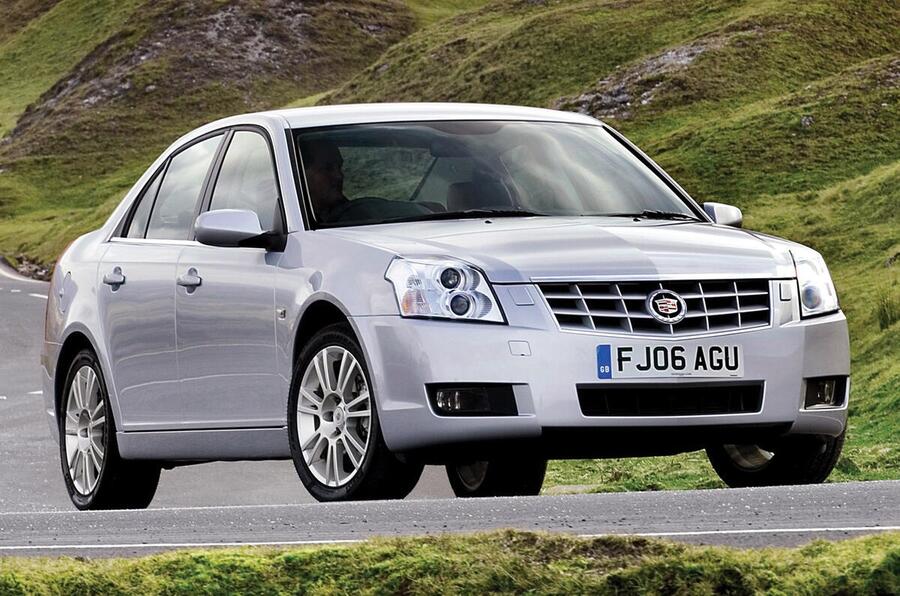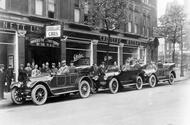Model 30s at Bennett’s in 1914; Dewar engineering trophy was awarded for its electric starter
As Cadillac primes its re-re-relaunch, we revisit the brand’s chequered past outside the US
General Motors recently reaffirmed its plans for a UK relaunch through Cadillac, as part of a wider European expansion spearheaded by its luxury brand.
Or perhaps we should say a re-re-rerelaunch, as Cadillac actually has a long, chequered history over here.
Life in the UK actually started positively for Cadillac. London sales of its first-ever model, the Model A (which came in either Runabout or Tonneau form), began in September 1903, less than a year after production started in Detroit.

(Fun fact: it was almost identical to Ford’s Model A and built in an ex-Ford factory, as Cadillac had been born out of an argument between Henry Ford and his investors.)
The London importer was the Anglo-American Car Co, which already represented Oldsmobile, Winton and EV specialist Baker.
Demand was said to be “very lively” from the off, and after eight months reader Denis Halsted told Autocar: “I bought a Cadillac because it impressed me by its quiet, easy running and great strength for a one-cylinder car. With nine months’ hard service, I have proved it to be an excellent starter.”
When the dealership’s Cadillac man, Frederic Stanley Bennett, left in 1910 to run his own showroom, the UK concession and smart new four-cylinder Model 30 went with him.
The Cadillac brand had been growing ever more luxurious, and it cemented this position in 1915 by becoming the first to mass-produce a vee-shaped eight-cylinder engine.
“It is really difficult to convey on paper any idea of the delight of the running,” gushed Autocar after driving the V8 Type 51. “One may indulge in superlatives and yet fall short of producing anything like the real impression of satisfaction.”
Enjoy full access to the complete Autocar archive at the magazineshop.com
In 1927, GM transferred the UK Cadillac concession to Lendrum & Hartman, which opened a grand showroom in Mayfair, where the Type V-63 would be sold alongside GM’s lesser La Salle and Buick cars.
Two years later, Cadillac made another engineering innovation: a V16 engine for its new limousine. “It will certainly be one of the most interesting machines of recent years,” said Autocar as it “created quite a sensation in America”.
Little wonder Brits considered Cadillac as belonging to the highest echelon of brands, alongside Rolls-Royce. L&H may have sold only a handful of Cadillacs each year, but the buyers were aristocrats and celebrities – although the Prince of Wales ordered a Buick instead, as it came from his dominion of Canada.
L&H resumed selling new cars relatively promptly after World War II, and Cadillac embraced space-age styling in all its glory, chrome-plating its already glamorous image. Autocar first experienced one of these modern ‘Caddies’ in 1961, courtesy of L&H customer Joseph Bamford. The JCB founder had bought the world’s largest production car: the nine-seat, 6.2m-long, 2m-wide Fleetwood 75 limo.
“In almost every respect, its mechanical behaviour conforms with the highly civilised luxury of its appointments,” we reported. “It is always fascinating to sample the best that any country’s car industry can produce. Certainly the United States are well and truly represented with this fine Cadillac.” Bamford lent us several more of his L&H-supplied Caddies for road tests: Coupe de Villes of 1964 and 1968.
Impressive these may have been, but their enormous size and the unquenchable thirst of their 7.0-litre-plus V8s greatly diminished their appeal here, and so by the mid-1970s much of L&H’s business was funnelling cars to the Middle East.
The onset of Detroit’s ‘malaise era’ made the pitch even harder, but L&H persevered until January 1987 before succumbing to insolvency.
Cadillac surprisingly returned in spring 1998, wisely selling a small, FWD saloon but unwisely doing so via Vauxhall dealers. Worse still, the Seville STS was well below class standards: we deemed it the worst car we drove that year. Sales were dismal, so Cadillac gave up in 2002.
Just two years later, it tried again and this time it gave us “maybe the best American saloon ever made” in the CTS. But that still didn’t make it a BMW-beater, and even the Saab-engineered, Europe-specific BLS couldn’t convince buyers.

Further relaunches came in 2007 and 2010, but latterly with left-hand drive only, further limiting Cadillac’s potential, and so its distinctly American-flavoured models barely even registered.
Source: Autocar
